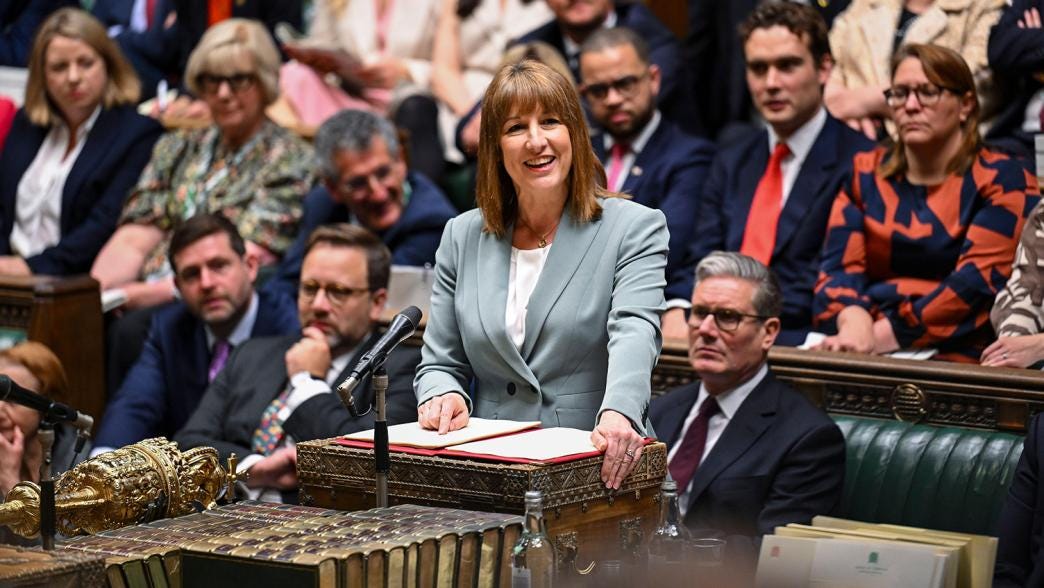Everything you need to know about the Spending Review
And why the health budget is the biggest risk not the biggest winner
Before starting on the criticism there were some positives about the way this spending review was done. Thank God that Rachel Reeves changed the fiscal rules in October to enable more capital spending, the best decision this government has made so far. The Tory plans she inherited would have seen a big drop off in investment at the worst possible time, whereas she has been able to put substantial sums into social housing, transport, defence, and energy infrastructure.
The new fiscal rules also allow government to use loans and guarantees to attract private capital without it appearing as debt, and the Treasury have set up a number of schemes, particularly around green energy and housing, to make use of that. There are also a bunch of techie things like more spending flexibility for mayors, multi-year local government settlements, and changes in Treasury guidance to encourage more investment outside London that are all good and long called for.
But, as with all spending reviews, when it comes to day-to-day spending the government have been a lot less strategic, and ended up taking the path of least resistance. With the exception of health, which has gone up, and foreign aid which had already been cut, the main day-to-day budgets are largely flat for the next three years.
It’s entirely understandable, there’s a reason this happens every time, especially when there just isn’t enough money to go around. It’s the easiest way to avoid big internal rows, and nasty headlines, because it means no politically sensitive budget has been cut. But once more, it also means that nothing has really been prioritised. The missions that were supposed to define the government are barely mentioned. No activity has been stopped, so no space has been created to genuinely improve anything either. Nor does leaving everything more or less as it is take any account of where demand is rising fastest, or where public services are closest to acute failure.
The standard model for reporting on spending reviews encourages this approach. Departments are tagged as “winners” or “losers” on the basis of whether their budgets have gone up or down. But that doesn’t make much sense. For a start it assumes the current budget is correct, when it practice it’s based on historical decisions that may well have been wrong . Plus it assumes future pressures on each department will be the same, which is obviously untrue.
Take local government as an example. They received a small increase of 1.1% a year. When added to higher council tax bills they’ll have 2.6% more a year. This is more than any large department except health. But describing them as winners requires ignoring history and context. Councils took the brunt of austerity cuts in the Osborne years. At the same time demand has grown rapidly for local government’s main areas of spending: social care and children’s services, leading to widespread cuts in discretionary services. Care now consumes around 70% of all funding. Many councils are edging close to bankruptcy. So I would argue this is a worse settlement than secured by many other departments that got a smaller increase, or even a cut.
Thinking of the spending review in terms of need rather than who’s up or down leads to a very different analysis to the standard narrative that health and defence are the big winners. Indeed, the decision to keep health spending lower than the historical average is the single biggest political risk the government is taking. In the rest of the post I’ll explain why. Then I’ll look at some of the other hidden landmines dotted around the spending review. I’ll finish by looking at what this all means for the public finances more broadly over the coming years.
Keep reading with a 7-day free trial
Subscribe to Comment is Freed to keep reading this post and get 7 days of free access to the full post archives.




